How to wallpaper – the expert guide to livening up any wall
This expert advice on how to wallpaper will make transforming any space in your home fuss-free
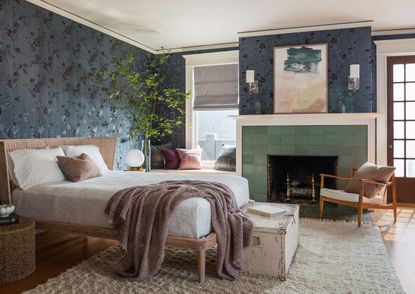
Learning how to wallpaper is a great way to add color and pattern to breathe some life back into your home. But with fiddly trimming and messy pasting, hanging wallpaper can be tricky to do without the help of a professional.
Although sticking to the paintbrush might be more tempting, opting for wallpaper – or even combining the two and wallpapering a feature wall – can elevate your interior, as well as cover up any imperfections in the plaster of your walls that paint can’t hide. If you know how to wallpaper properly and you’re equipped with everything you need, you can create your own bedroom wallpaper ideas without having to splash out on hiring a professional.
'Wallpapers come in all kinds of finishes, from simple but colorful, digitally printed rolls, to tactile fibrous rolls with metallic, and mica finishes for that added sparkle,' says James Greenwood, wallpaper and paint specialist at Graham & Brown. 'Or for a more heavy-duty finish, you may prefer a heavyweight vinyl wallpaper, which is great for very high traffic areas.'
Take a look at our expert guide below before you get started, that will teach you everything you need to know on how to hang wallpaper.
How to wallpaper in 9 steps
You will need
- Dust sheets
- Stepladder
- Pasting table (optional)
- Pencil - (carpenter pencils are an affordable but ideal investment for any DIY project, as they won’t roll away when you put them down)
- Spirit level (this should be around 50cm or longer to ensure it runs the width of the wallpaper)
- Tape measure
- Wallpapering scissors
- Wallpaper adhesive
- Bucket to mix paste (if adhesive isn’t ready-mixed)
- Roller and tray
- Pasting brush (optional)
- Stanley knife or a craft knife
- Seam roller
- Large sponge
- Wallpaper smoothing tool/brush
- Decorator's trimming tool
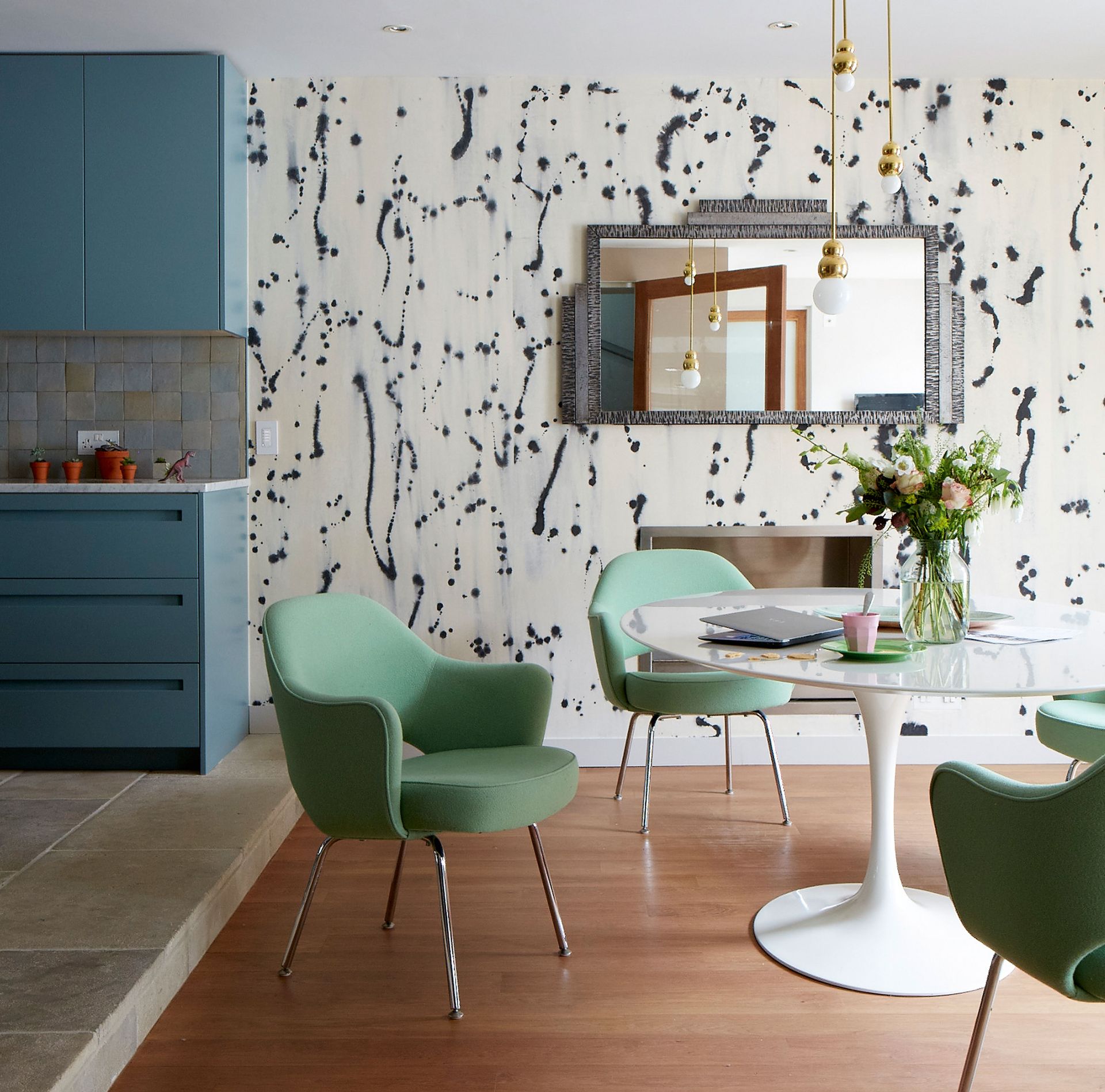
1. Measure the walls for the number of rolls you'll need
Once you’ve selected your wallpaper of choice, before you buy it, ensure you’ve measured the walls you’re going to cover so you can purchase enough rolls. To do this, measure the width and height of the wall(s) you want to paper with your tape measure (from the baseboard up). It is recommended to add 10 percent to these total numbers to ensure you have enough excess when trimming. If you’re wallpapering around windows and/or doors, you may decide to subtract them from your measurements as you go. This will give you just the right amount of excess so you won’t have too much leftover
Most wallpaper brand websites will offer a wallpaper calculator which you can plug these measurements into and it will tell you exactly how many rolls you’ll need for the product you want. Wall mural ideas using wallpaper are slightly different, so refer to the manufacturer's instructions.
2. Prepare walls for wallpaper
Lay down your dust sheets on the floor around your walls to protect your floor from paste, particularly if you have carpet. Ensure you have enough space around you in the room you’re working in. Move furniture around or out of the room if needed, as you will need plenty of space.
Before you hang any wallpaper, it’s important to prepare the surface. If it’s already wallpapered, ensure to remove the old wallpaper using a sponge and warm water or a steamer, and a scraper.
Chelsea Clark, head of brand at Lust Home, says: 'Make sure that any holes have been filled and sanded and that the wall has been cleaned with sugar soap prior to applying any paste or paper.'
3. Mark a starting point
It is recommended to start wallpapering from the corner of the wall. If you’re wallpapering an entire room, use your tape measure to measure a line the width of your roll of wallpaper, plus another 2 inches, from the edge of the wall. Here, use the spirit level to draw a vertical line from the top of the wall to the bottom (where the skirting begins), ensuring it’s straight.
Line up the outer side of your length of wall paper with the line you’ve just drawn. This will mean the join won’t start from the corner, which can look odd. When you do come to wallpapering the corner, you want to wrap the paper around the corner for it to look as seamless as possible. If you’re only loooking at how to wallpaper a feature wall though, it’s best to start directly from the corner of the wall without leaving a gap.
4. Cut lengths of wallpaper
Lay your roll of wallpaper on your pasting table, if you have one. If not, you can do this on any other clean, flat surface that is long enough.
Using the measurement of the height of the wall, take your tape measure and mark this on the paper. Add another 4 inches to this measurement, marking with your pencil. This will allow you to trim a straight line once the paper is hung.
Take your spirit level and, ensuring it is straight, draw a line across the width of the backside of the paper where your extra 4-inch mark is. Cut along the line evenly using your wallpaper scissors.
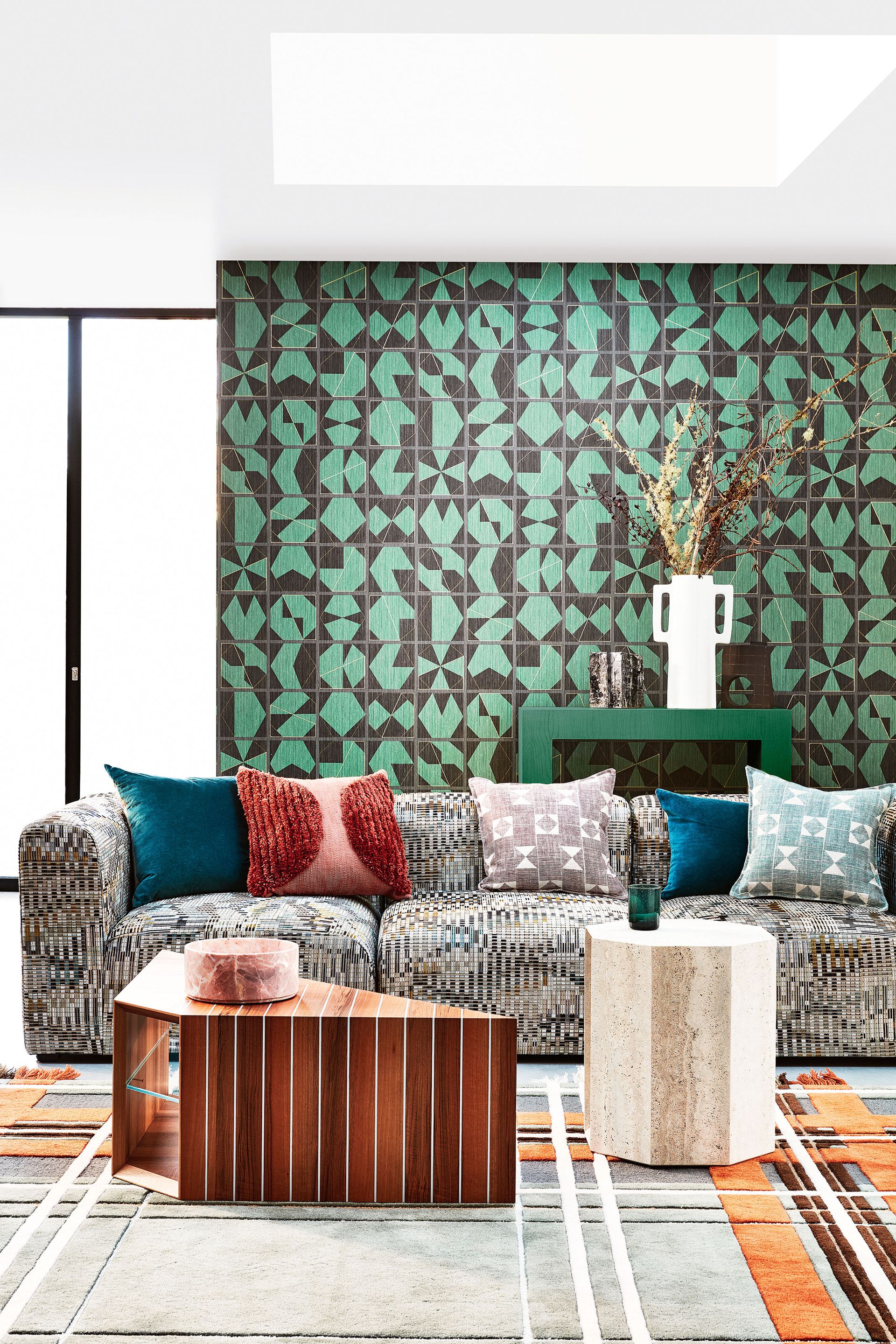
5. Paste
Now it’s time to paste. Whether you paste the paper itself or on the wall directly often depends on the type of paper you have and if it needs to soak in the paste beforehand.
Chelsea Clark says: 'We recommend opting for paste-the-wall wallpaper – especially for beginners. It’s the easiest way to hang in our opinion.'
When it comes to the type of paste to use, it’s yet another choice that depends on what’s best for you and what paper you’re using. You can either use ready-mixed adhesive, or adhesive you can mix yourself with water. For this, you’ll need a bucket and something to stir it with.
James Greenwood, wallpaper and paint specialist at Graham & Brown, says: 'Although either type of adhesive will get the job done, ready-mixed versions usually have lower water content making them slightly stronger – ideal for heavyweight papers.'
You can also purchase pink ready-mixed paste that dries clear so when you’re pasting, you know which parts of the wall or paper have already been covered.
Once your paste is prepared (if you’re not using ready-mixed), it’s ideal to use a roller and a tray when pasting the wall. Pour some of the paste into the tray. Take the roller, and with a clean roll, apply the paste to the wall up to where your line is for the length of paper you’re about to hang.
Chelsea Clark at Lust Home says: 'Ensure you paste slightly wider than the width of the roll to ensure that your seams will be securely stuck to the wall. Use a paintbrush to apply along the top and bottom of the wall, and around any sockets.'
If you’re pasting the paper, lay it out on the pasting table and using a pasting brush, coat the paper evenly, ensuring you cover the edges. You won’t be able to fit the entire length on the table, so it’s easiest to fold it over on itself and move the paper up the table, continuing to paste the rest. This is also handy when carrying the paper over to the wall so it doesn’t drag on the floor. Leave the paste to soak on the paper for a few minutes before hanging.
6. Hang the wallpaper
This is where it can be tricky to get the paper placed straight and smoothly. If your paper is pasted, unfold one side of the paper and using a step ladder, place the pasted side gently against the wall. An extra pair of hands will come in handy at this point so they can unfold the other side of the length of paper and gently press it against the bottom of the wall.
If the wall is pasted, you just need to place the paper on the wall. A stepladder and a helping hand will still be useful, though, so one person can adjust the bottom, and the other the top.
At this point, while the paste is still wet, you can easily maneuver the paper around on the wall. Ensure it’s lined up perfectly with your pencil line, as this should definitely be straight. Make sure there is an even amount of excess paper at the top and bottom of the wall.
'It is important that you take your time to get the first length of wallpaper correctly hung as it can end up looking a little wonky otherwise,' says Chelsea Clark.
7. Smooth out the paper
Once your length of paper is in position, using your smoothing tool and/or brush, carefully, but firmly, smooth the paper out from top to bottom. From the centre of the paper, brush outwards to both sides to remove all air bubbles, making sure there are no creases. The paper should be flat against the wall with no lumps or bumps.
8. Cut the excess
Trimming the paper neatly to form a perfectly straight edge is one of the most difficult aspects of wallpapering, especially if your walls and ceilings aren’t straight, which is often the case for most houses.
'Trim any excess wallpaper with a pair of sharp scissors and then use a trimming tool to firmly push the paper into the ceiling crease and skirting board and trim using a craft knife,' says Chelsea Clark.
Cutting a perfectly straight edge can be difficult to achieve with only a pair of wallpapering scissors. 'Don’t use scissors!' says Alex Glover, DIY expert decorator at Lick. 'The most effective way to cut through wallpaper is by using a very sharp utility knife and a ruler, preferably with a spirit level, to make sure it's straight.'
Using this – or a craft knife – to trim while the paper is in place will ensure you don’t trim the paper too short and won’t have to start over again. Just be sure to take your time using the knife as not only is a utility blade extremely sharp, but going too fast can create jagged cuts in the paper.
9. Repeat the process
You’ve now hung your first length of wallpaper! Before repeating this process with your second length of paper, it is important at this stage to ensure that you line the pattern up with the length of wallpaper already on the wall. If you don’t have patterned wallpaper, you can ignore this step.
'After you’ve hung your first length, roll out another length of wallpaper and match up any patterns before cutting (allowing 4 inches of overhang either end),' says Chelsea Clark.
Butt edge of the paper up against the one already on the wall, ensuring they are closely line-up, but not overlapping. Use a seam roller to flatten where the paper joins.
Using a large, damp sponge, run it over the seams to remove excess paste as you go before it dries up on the paper.
Continue these steps until you have wallpapered the whole room, or all the walls necessary and, voila, you've embraced the wallpaper trend!
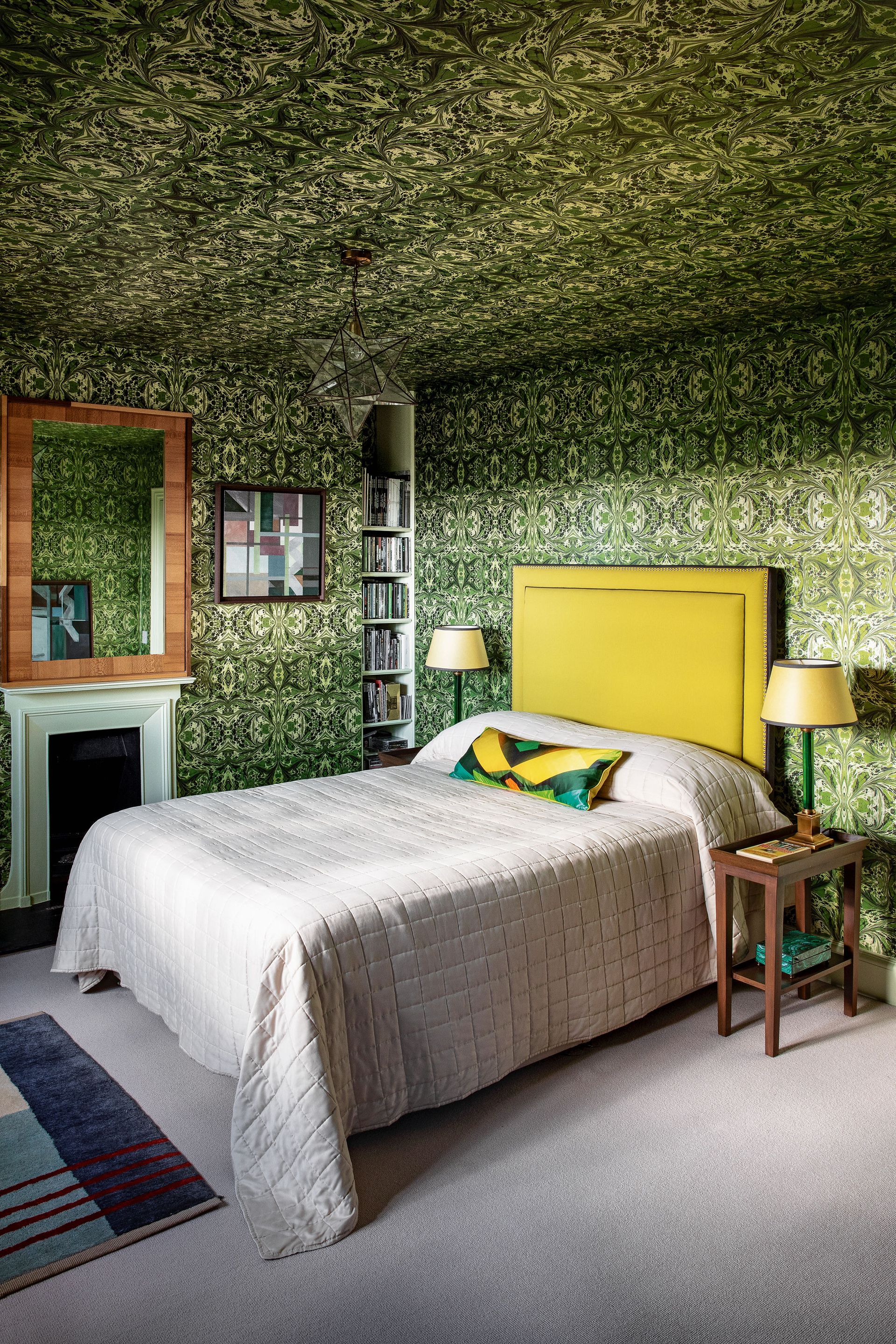
Where do you start when wallpapering?
It's best to work away from a window’s natural light so the paper edges don't cast a shadow if they overlap slightly. Moving this way is a good living room wallpaper idea, as it means the last ‘drop’ you hang will go into a corner, which means if the wall is wonky or out you can trim the paper, and it won’t be obvious.
'Usually you would start wallpapering from the corner of the wall and work your way around the room, but if you have a focal point such as a fireplace, then you should start there, working from the center,' says James Greenwood, wallpaper and paint specialist at Graham & Brown. 'Doing so will ensure the design is centered and aligns well with the focal point.'
Alex Glover, DIY expert decorator at Lick, says: 'The most important thing when ordering your wallpaper is working out how much you need. If you know what the width of the wallpaper is, you can then work out how many drops and how many panels you will need for your walls. Once you have your paper ordered, you need to template the wall and work out where you’re going to begin the application process.'

How do you prepare to wallpaper a wall?
James Greenwood, wallpaper and paint specialist at Graham & Brown, says: 'Although the wallpaper will end up covering the wall, you should still put in the same amount of effort and attention to detail as you would when preparing to paint a wall. Fill any holes or imperfections and sand down to ensure your wallpaper lies flat and make sure to clean your walls with sugar soap. This way you won't have any dirt and dust trapped beneath the wallpaper and the adhesive will be able to stick properly.'
Alex Glover, DIY expert decorator at Lick, says: 'The preparation of the wall is really important. If you aren’t using lining paper (which isn’t essential) you need to make sure there aren’t any bumps, cracks or imperfections so the wallpaper will apply nice and smoothly.'
Lining paper can be useful if the wall beneath is in relatively poor condition, and even after filling holes and sanding, some of the unevenness shows through. Lining paper will add an extra layer of thickness to help disguise the texture of the wall. It will make the process a lot longer, however. You will want to leave the lining paper the set overnight once hung, before hanging your actual wallpaper over it, to ensure it’s secure.
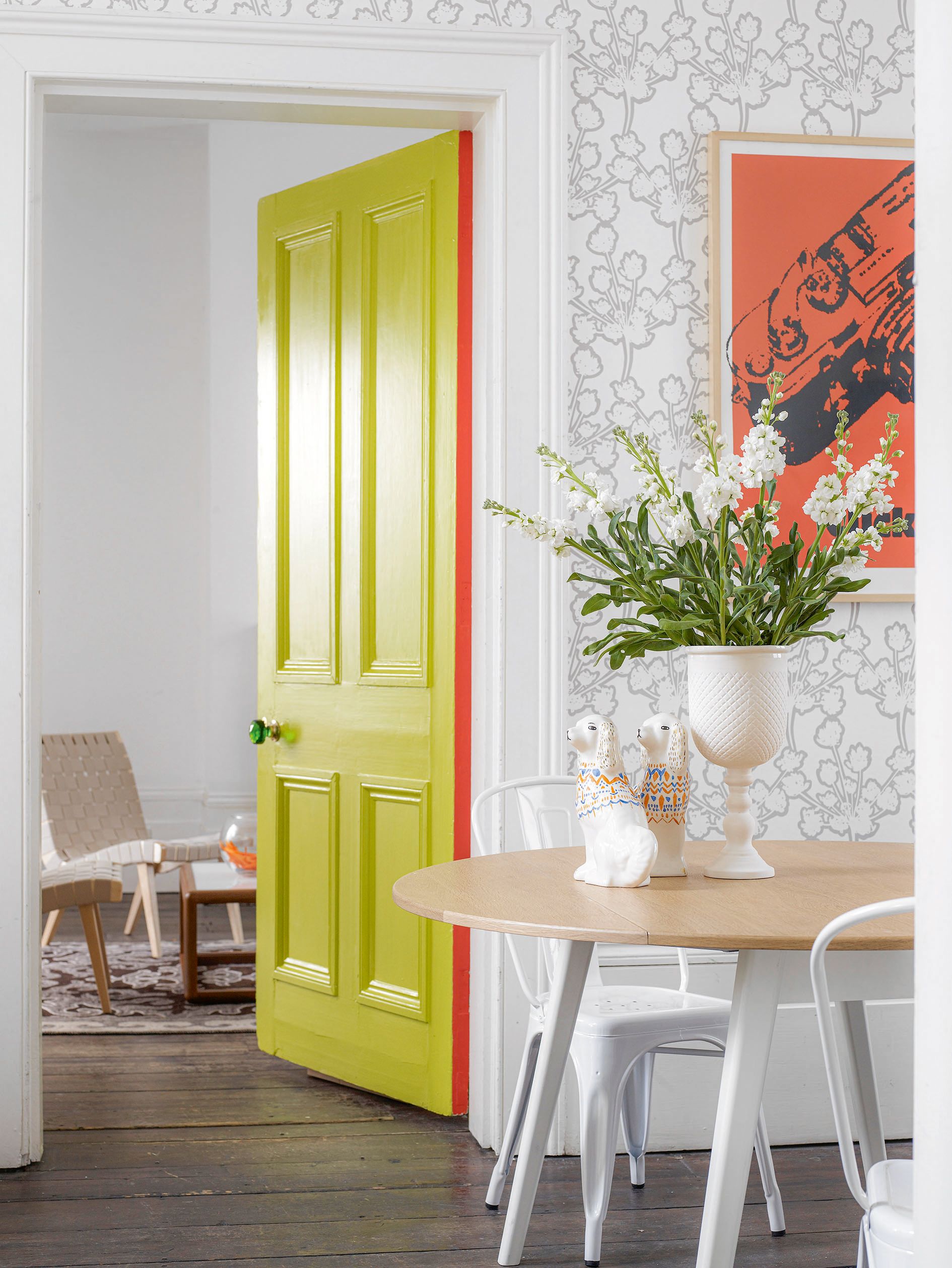
Is there an easy way to wallpaper a wall?
'Unfortunately, there are no shortcuts when it comes to hanging wallpaper,' says James Greenwood, wallpaper and paint specialist at Graham & Brown. “So make sure you have all the tools and time you need to do it properly. Rushed jobs will look just that – rushed. Take your time and the process will not only be smoother and easier, but the end result will be much better.”
Paste-the-wall is a more modern method of wallpapering. More and more brands are offering this kind of paper that can be hung dry onto the pasted wall. 'Paste-the-wall technology does make wallpapering so much easier than years past,' says James.
'It’s easy once you’ve nailed the technique,' says Alex Glover, DIY expert decorator from Lick. 'The best advice I can give is to not overthink the process and just concentrate on matching up the pattern. With most non-woven, modern wallpapers there’s often room for readjustments if the panels aren’t matching up.'
Be The First To Know
The Livingetc newsletter is your shortcut to the now and the next in home design. Subscribe today to receive a stunning free 200-page book of the best homes from around the world.
Georgina Crothers is a trainee lifestyle journalist currently studying MA Magazine Journalism at City University of London, having written for Tesco Magazine and Crime Monthly. Aspiring to write home and interiors content once her degree is finished, and as a novice DIYer, you’ll often find her bingeing home renovation and furniture flipping TikToks, searching YouTube for the perfect DIY tutorial to revamp her own living space.
-
 How to Thaw a Frozen Pipe — Learn Everything You Need to Know in 5 Minutes With This Guide
How to Thaw a Frozen Pipe — Learn Everything You Need to Know in 5 Minutes With This GuideWinter storm caught you off guard? We asked an expert — just how do you thaw a frozen pipe?
By Hugh Metcalf Published
-
 The 12 Very Best Silk Bedding Pieces — As Our Style Editor Says: 'It's What Dreams Are Made Of!'
The 12 Very Best Silk Bedding Pieces — As Our Style Editor Says: 'It's What Dreams Are Made Of!'Slumber in lustrous luxury with the very best silk bedding sheets, duvets, pillowcases, and more — your sleep score will thank us later
By Julia Demer Published

